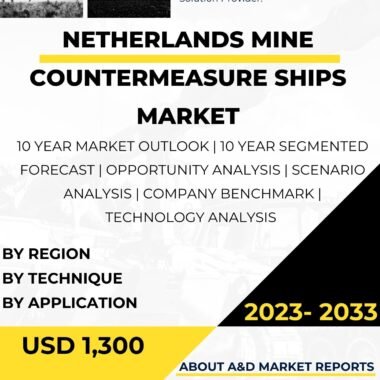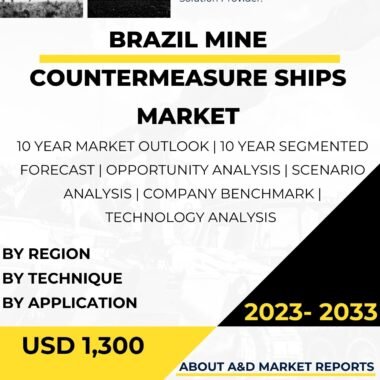Description
Mine countermeasure (MCM) ships play a crucial role in the United States Navy’s efforts to detect, neutralize, and remove underwater mines, which pose significant threats to naval operations and commercial shipping. Mines can be deployed covertly and remain dormant until triggered, making them a formidable weapon against naval forces. As the U.S. Navy operates in diverse and potentially hazardous maritime environments, mine countermeasure ships serve as a vital component of the fleet’s mine warfare capabilities.
Mine countermeasure ships are specialized vessels designed and equipped with advanced sensor suites, mine hunting systems, mine neutralization technologies, and mine disposal capabilities. These ships are typically purpose-built or converted from existing hulls to meet the specific requirements of mine warfare operations. The primary goal of MCM ships is to ensure safe navigation for friendly forces and civilian vessels by eliminating the threat of underwater mines.
One of the essential tasks of MCM ships is mine detection. These vessels are equipped with a variety of sensors and sonar systems to locate and identify potential mine threats. Acoustic, magnetic, and electromagnetic sensors are used to detect anomalies in the water column or seabed that may indicate the presence of mines. Sophisticated sonar systems, such as side-scan and synthetic aperture sonar, provide high-resolution imaging of the seafloor, enabling precise identification of mine-like objects.
Once potential mine threats are detected, MCM ships deploy unmanned underwater vehicles (UUVs) or remotely operated vehicles (ROVs) to conduct mine hunting operations. These unmanned systems can navigate through hazardous areas and use their sensors to inspect suspicious objects for characteristics consistent with mines. UUVs and ROVs reduce the risk to personnel by keeping them at a safe distance from potential mine threats during the detection process.
The U.S. Navy’s MCM ships also employ influence sweeps and magnetic signature duplication systems to simulate the magnetic and acoustic signatures of larger naval vessels. These sweeping operations aim to trigger pressure and magnetic influence mines, thereby neutralizing them without directly engaging them. The use of influence sweeps is an important method for reducing the number of mines present in a given area.
In addition to detection and mine hunting, MCM ships are equipped with mine neutralization systems to destroy or render safe identified mines. One common method of mine neutralization is the use of remotely operated mine disposal vehicles (ROMDVs). These specialized vehicles approach the target mine and attach a charge to it for controlled detonation, rendering the mine inert. ROMDVs can be remotely operated from the MCM ship or launched from an embarked MH-53E Sea Dragon helicopter for increased operational flexibility.
The United States Navy’s MCM ships operate in a variety of environments, from littoral areas close to shore to open ocean regions. As a result, these vessels need to be highly maneuverable and capable of operating in shallow waters. The MCM ships’ hull designs often incorporate features to reduce the ship’s magnetic and acoustic signatures, making them less susceptible to mine attacks.
To effectively conduct mine countermeasure operations, MCM ships often work in conjunction with other assets, such as helicopters, patrol boats, and mine countermeasure divers. The integration of different platforms and capabilities allows for a more comprehensive and effective approach to mine warfare.
The U.S. Navy’s MCM fleet consists of several classes of ships, each with unique capabilities and roles. The Avenger-class MCM ships, for instance, are designed specifically for minehunting operations using sonar and UUVs. The Arleigh Burke-class destroyers are equipped with MCM systems as part of their multi-mission capabilities, enabling them to conduct mine warfare operations while also performing other tasks, such as air defense and anti-submarine warfare.
In recent years, the U.S. Navy has been exploring new technologies to enhance mine countermeasure capabilities further. Autonomous systems, such as unmanned surface vehicles (USVs) and autonomous underwater vehicles (AUVs), are being integrated into MCM operations to improve efficiency and reduce risk to personnel. These autonomous systems can operate independently or collaborate with manned MCM ships, enabling expanded coverage and data collection capabilities.
The continued development of unmanned systems, artificial intelligence, and machine learning holds great promise for mine countermeasure operations. These technologies can enhance the speed and accuracy of mine detection, classification, and neutralization processes, thereby increasing the effectiveness of MCM ships in safeguarding naval operations.
Challenges remain in mine countermeasure operations, including the need for robust sensor performance in complex underwater environments, reducing the false alarm rate in mine detection, and improving the efficiency of mine neutralization techniques. Additionally, the threat of evolving mine technologies, such as smart or autonomous mines, necessitates continuous research and development efforts to stay ahead of potential adversaries.
In conclusion, United States mine countermeasure ships play a vital role in safeguarding naval operations and ensuring safe navigation in hazardous maritime environments. Equipped with advanced sensor suites, mine hunting systems, and mine neutralization technologies, MCM ships are capable of detecting and neutralizing underwater mines, a critical threat to naval forces and commercial shipping. As technology continues to advance, the integration of unmanned systems and AI-driven capabilities is expected to further enhance the effectiveness and efficiency of mine countermeasure operations, contributing to the U.S. Navy’s ability to maintain freedom of navigation and protect maritime interests worldwide.




